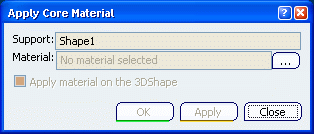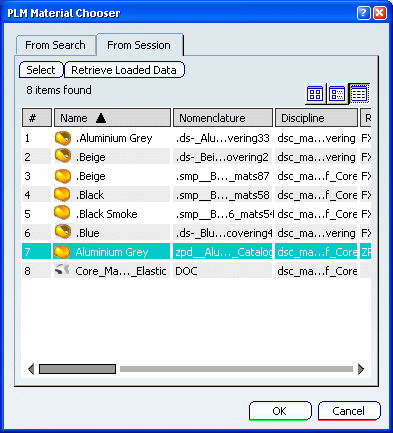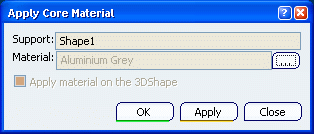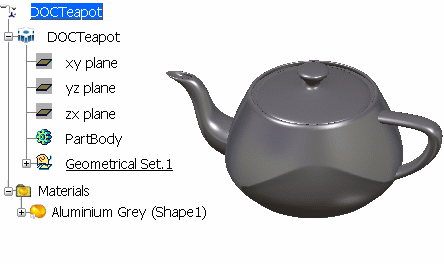Specify the working context by double-clicking a FEM representation in the specification tree.
The UI-activated object appears highlighted in blue:

The core material must be applied either to the current
object (product reference), to a representation instance beneath the current
object, or to a feature within a representation reference.
Select a support for the core material in the
specification tree (a product reference, a
representation instance, or a feature within a representation
reference).

Click Apply Core Material
 .
.
The
Apply Core Material dialog box appears:

Click
 to select the material of your choice.
to select the material of your choice.
The PLM Material
Chooser appears. Two tabs are available:
- From Session:
select from materials already loaded in your session.
- From Search:
select from all materials stored in the PLM database.
To display a list of available materials, use one of
the following procedures:
- On the From Session tab, click Retrieve loaded data.
- On the From Search tab, enter a substring of the
desired material's PLM identifier and click Search;
alternatively, you can click Advanced Search
and enter search criteria in the Search Criteria
dialog box.

Select a core material (e.g., Aluminum) from the list, and click
OK.
The Apply Core Material dialog box is updated accordingly.

Click Apply.
The core material is applied.

To change the applied core material, use the same procedure.
The new material will replace the old material.